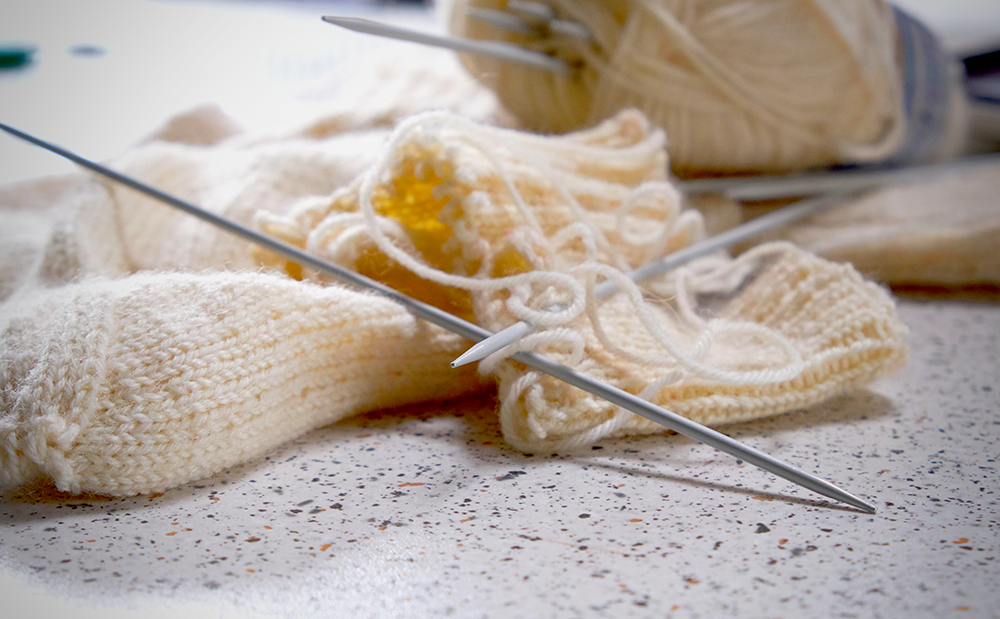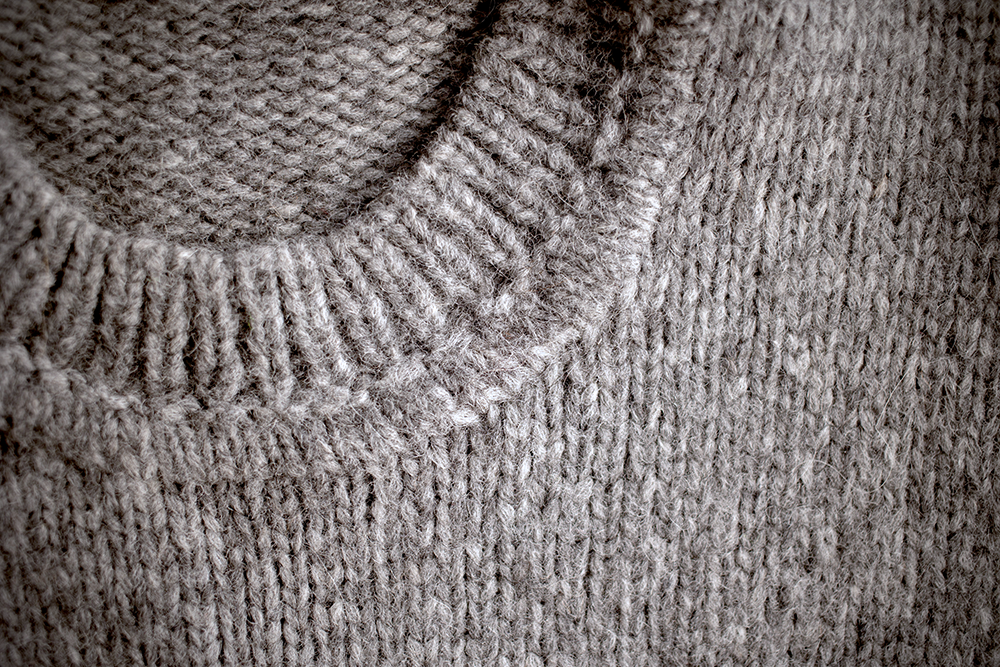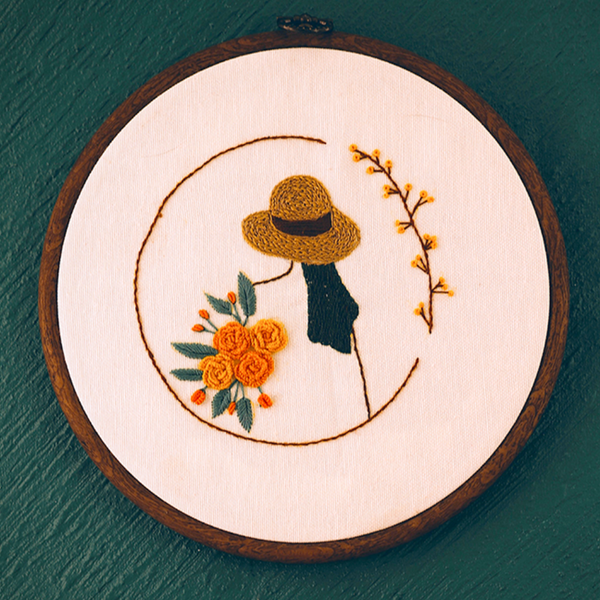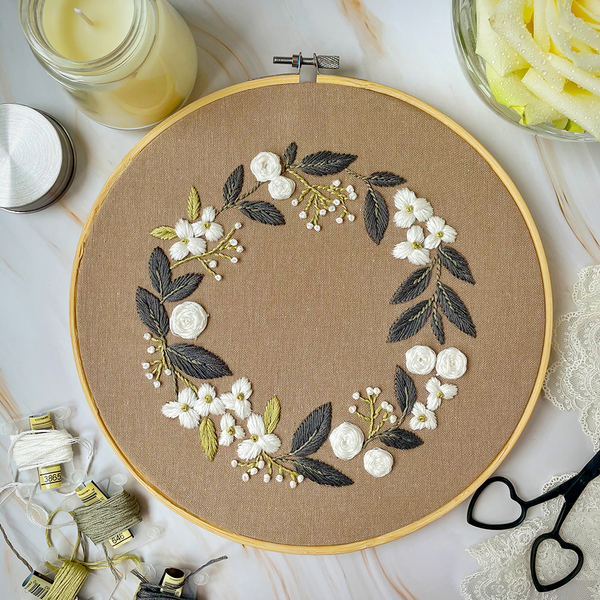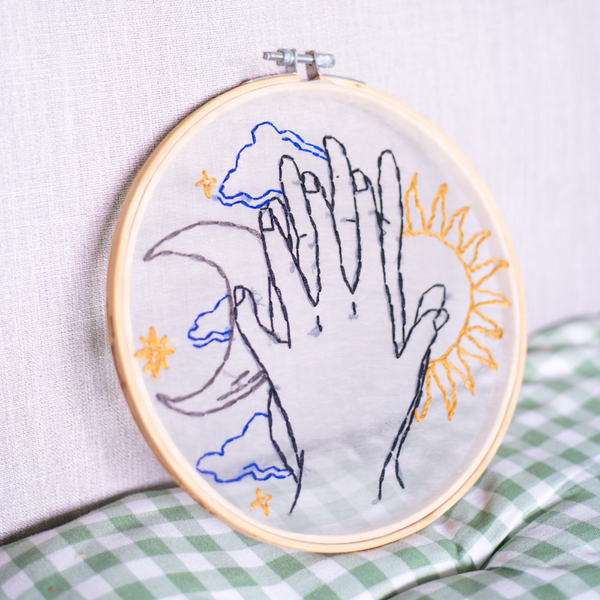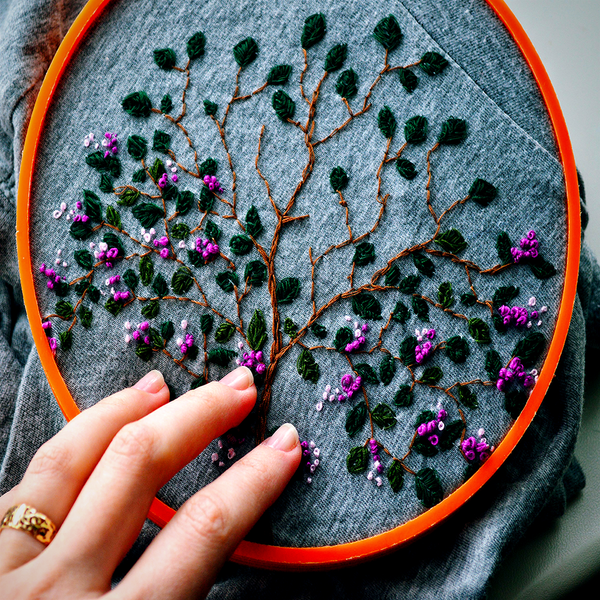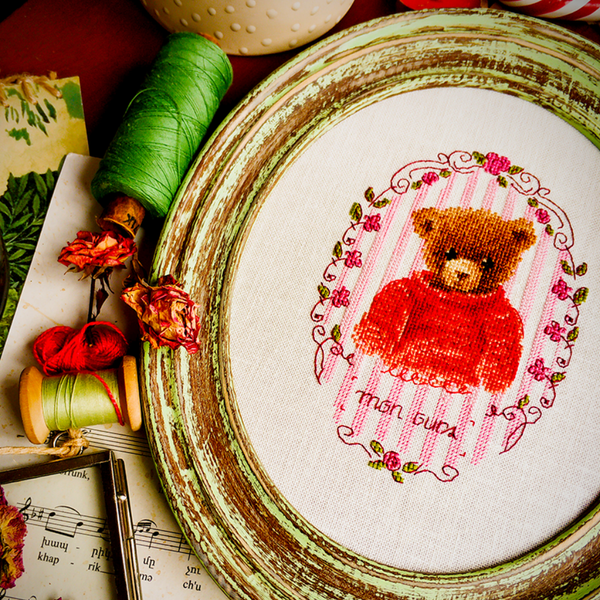Looking to stay cozy and warm this winter?
Are you a fan of knitting but dread the thought of lugging around knitting needles and yarn?
Well, then knitting machines are just the thing for you!
Machines have been used to knit garments since the mid-18th century.
Today’s modern versions make creating & crafting that much more accessible: they not only speed up the process but also open up new possibilities for designs.
Have you ever considered making a sweater with a knitting machine?
If so, keep reading!
Here, we’ll cover all the info on using one to create your own cozy sweatshirts and sweaters at home.
This blog post will provide tips and tricks on how to use this trusty device so that your finished product ends up being something truly unique and stylish for everyone in your household.
A knitting machine can make the process of creating a stunning sweater much simpler than trying to do everything by hand - with faster results.
Plus, seeing how quickly that easy-to-create masterpiece grows right before your eyes will fill you with pride!
So, if you’re feeling ready for this crafty challenge, read on to find out more about how machines work and what basic supplies are needed for this project.
Get ready to hunker down for winter in style - let's jump into putting together those pieces of fabric together!
Key Takeaways:
- Yes, You Can: You can indeed make a sweater with a knitting machine, which can be faster and more precise than hand knitting.
- Understanding the Process: Knowing the parts of the sweater and the machine's functions is crucial for successful machine knitting.
- Resources Are Key: Helpful YouTube videos and guides can assist in navigating the complexities of machine knitting.

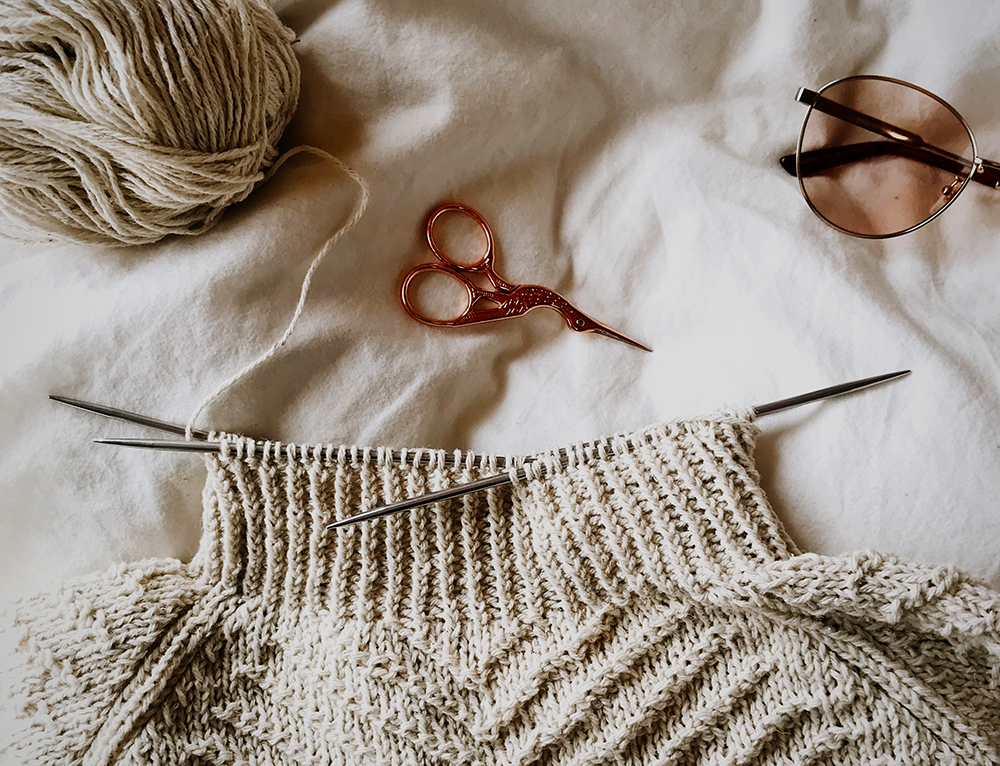
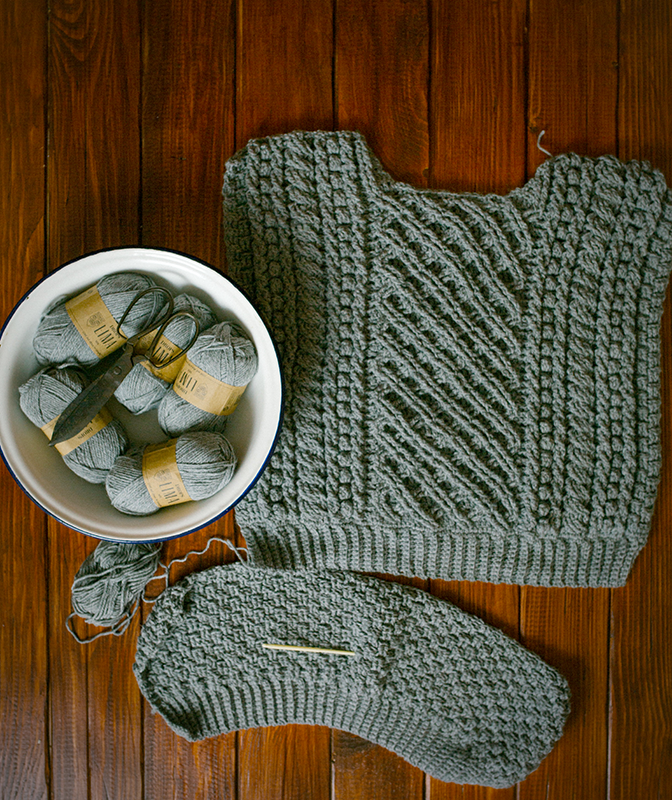
History of Knitting
Knitting is an artform that has been around for centuries, and it's one that has never gone out of style.
It's a craft that has been passed down through generations, with new techniques and technologies being developed along the way.
With the rise of technology, we now have knitting machines that allow us to create textiles at a faster pace than ever before.
While hand knitting is still popular, machine knitting has become increasingly more accessible and efficient.
The first knitting machines were invented in the mid-18th century; over time, the technology advanced to include automated features and different stitch patterns.
Today, there are a variety of knitting machines available on the market with varying capabilities to suit all skill levels.
But can a knitting machine really create a sweater? You might be surprised by the answer.
Knitting machines have revolutionized the way we create knitted garments, offering speed and precision that hand knitting can't match.
And yes, a knitting machine can indeed make a sweater!

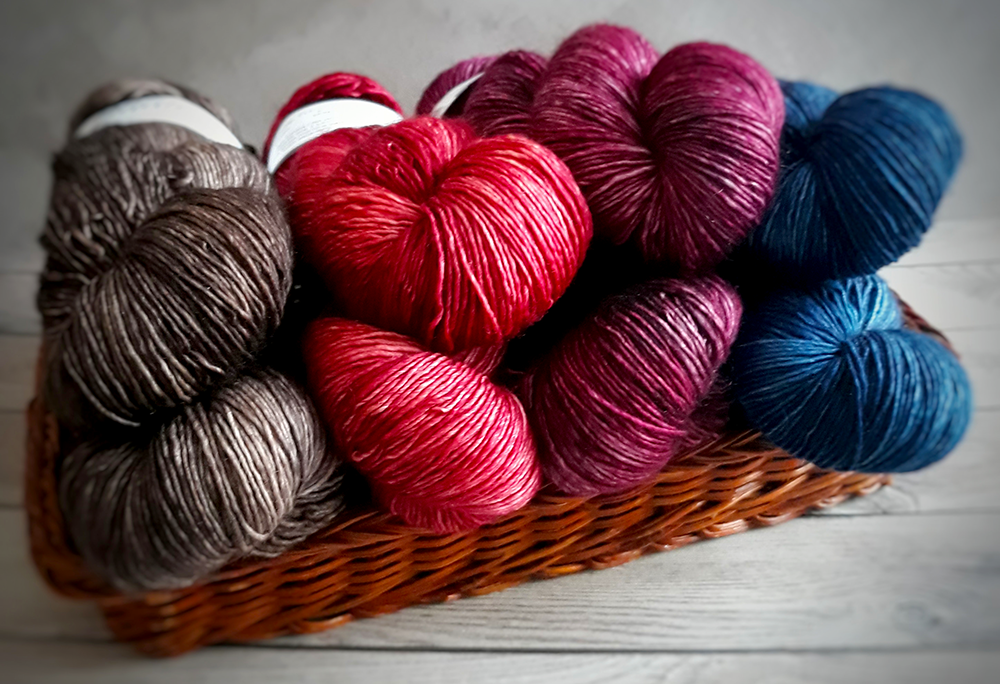
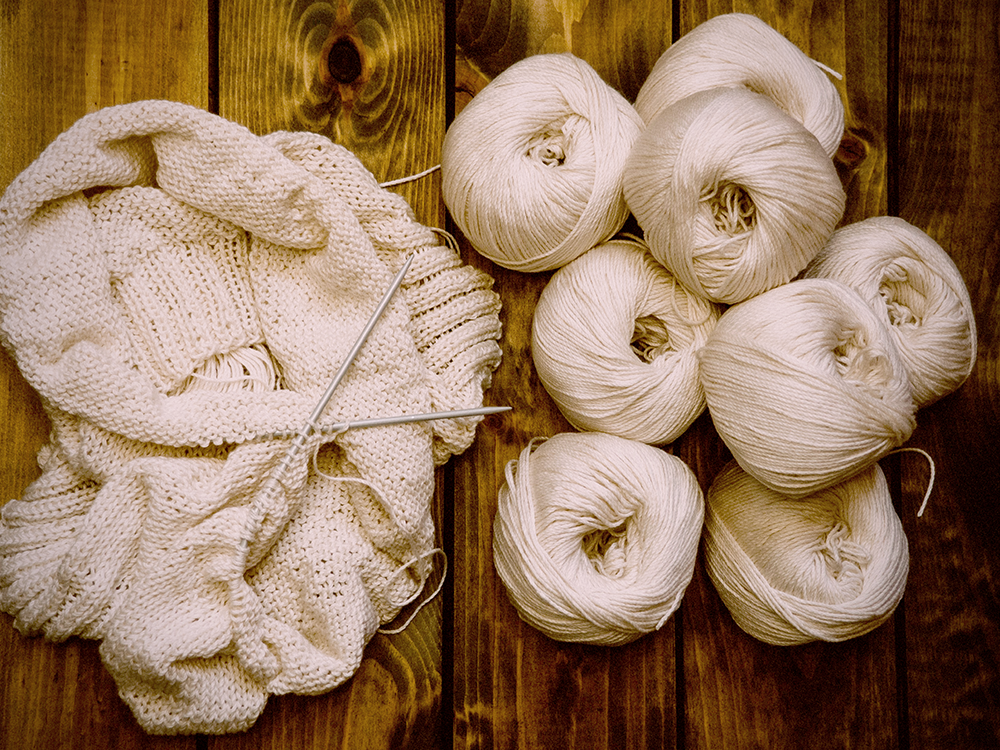
The Basics of Machine Knitting
Machine knitting and hand knitting share the same fundamental stitches and techniques, but the way they are executed differs.
Knitting machines use a bed of latch hooks to form stitches much faster than could be done by hand.
For those wondering if a sweater can be crafted using these devices, the answer is a resounding yes.
Machine knitted sweaters can range from simple designs to intricate patterns with colorwork.
The possibilities are endless, and the best part is that a knitting machine handles all the hard work.
But before diving into making a sweater, it's essential to understand how a knitting machine works.
There are three main components to keep in mind when learning about this device: the needles, yarn tension, and carriage.
Each of these parts plays a crucial role in creating a knitted fabric.
Machine Knitting vs. Hand Knitting
While machine knitting can be faster and more consistent, hand knitting offers a level of detail and customization that machines can't replicate.
Hand knitting also allows for more control over the finished product, while machine knitting can be limiting in terms of design and stitch patterns.
However, with practice and experimentation, a skilled machine knitter can create intricate designs on their garments as well.
In many cases, combining both hand and machine knitting techniques can result in beautifully unique pieces.
Both methods have their place, and many knitters enjoy using both techniques for different types of projects.
For those who have never used a knitting machine before, it may feel intimidating at first.
But with resources like YouTube tutorials and beginner's guides, learning how to use a machine can be accessible and straightforward.
The best part?
Once you've mastered the basics, you'll be able to create beautiful sweaters in record time!
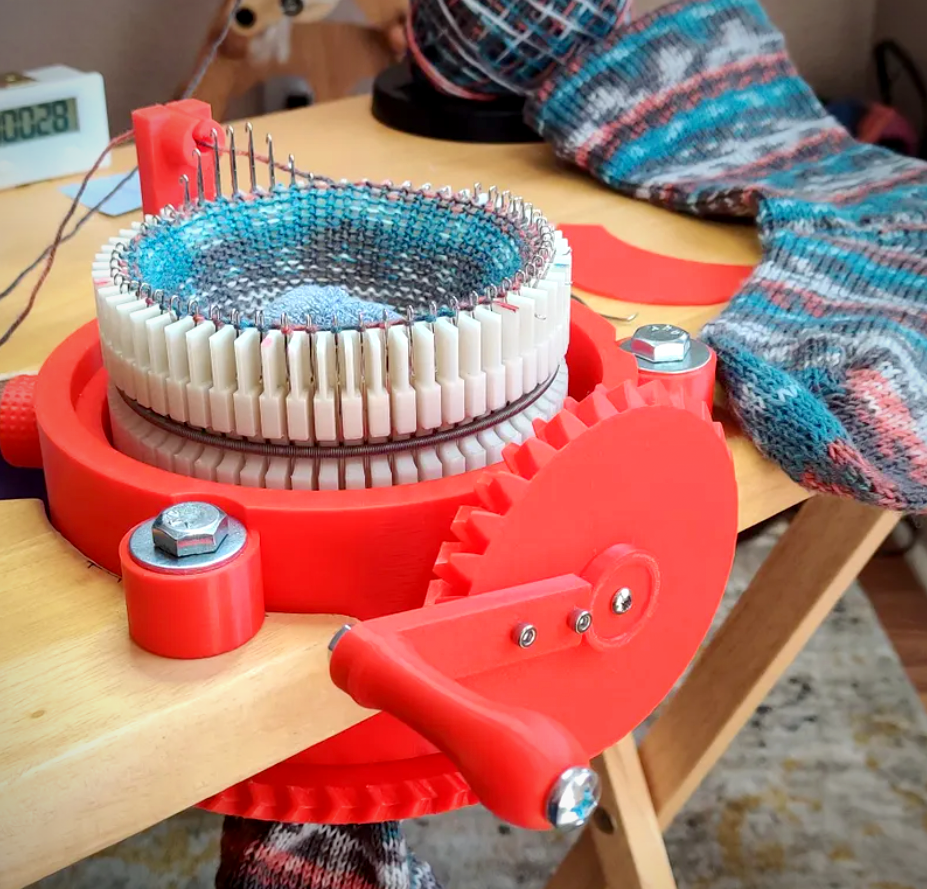


Choosing the Right Knitting Machine
First things first, let's talk about the different types of knitting machines.
There are two main types of knitting machines: flatbed machines and circular machines.
Flatbed machines are great for creating flat fabrics such as scarves and blankets, while circular machines are better suited for creating rounded items such as hats and sleeves.
When it comes to creating a sweater, you'll likely want to use a circular machine.
Not all knitting machines are created equal.
Some are better suited for lightweight yarns and delicate patterns, while others can handle heavier yarns and more robust designs.
When planning to knit a sweater, it's essential to select a machine that can accommodate the yarn weight and pattern complexity you have in mind.
This will ensure that your knitted fabric has the right tension and drape for a comfortable and well-fitting garment.
It's also worth considering the size of the knitting machine, as larger machines can handle bigger projects like sweaters more easily.
With that said, it's always best to do some research before investing in a knitting machine.
Reading reviews and watching tutorial videos can help determine which machine is the right fit for your needs and budget.
Getting Started
Before you start knitting, gather all the necessary supplies:
- Knitting Machine: Choose one based on your skill level and budget. A beginner-friendly option is the standard gauge machine with 200 needles.
- Yarn: Use any yarn that's compatible with your chosen knitting machine. Be sure to check the gauge recommended by the manufacturer.
- Machine Needles: These needles are specific to your machine and should be replaced periodically for the best results.
- Carriage: This is the part that moves back and forth on the bed of the machine, knitting stitches as it goes.
- Yarn Tension Unit: This component controls how tightly yarn feeds into the machine. It's essential to adjust it according to the recommended tension for your yarn.
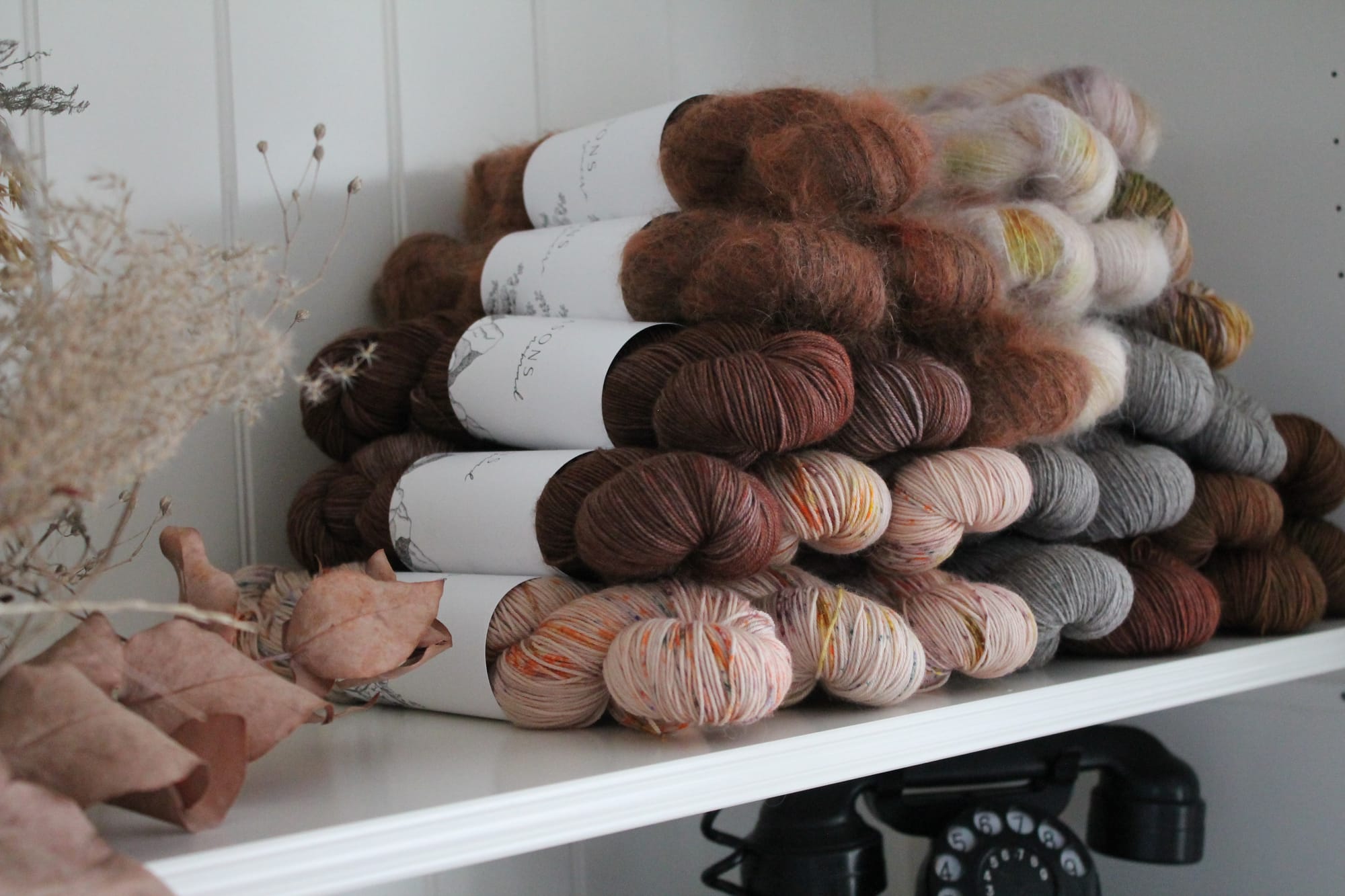

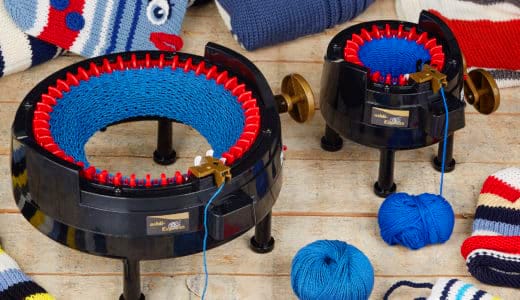
Preparing Your Machine and Materials
Before starting your sweater, it's crucial to set up your knitting machine correctly.
This includes selecting the appropriate needles, setting the tension, and ensuring that the carriage moves smoothly across the bed.
You'll also need to choose your yarn, which should be compatible with your machine's specifications.
Waste yarn is often used to start the knitting process, which can later be removed.
Once everything is set up and ready to go, it's time to start knitting!
Designing Your Sweater
The design phase is where you decide on the style, fit, and details of your sweater.
This involves choosing the right pattern, which may include ribbing rows, colorwork patterns, and other decorative elements.
You'll need to measure the intended wearer and calculate the number of stitches and rows needed for each part of the sweater, such as the front and back panels, sleeves, and side panels.
Taking precise measurements and using stitch markers can help ensure that the sweater is properly sized.
Casting On and Knitting the Panels
Casting on with a knitting machine often involves using waste yarn and a crochet hook to create a provisional edge.
From there, you'll work on the first panel of your sweater, keeping an eye on the row counter to ensure consistency.
The front and back panels are typically knitted as two separate pieces, which are later joined together.
Once all panels are completed, they can be assembled using a sewing machine or by hand.
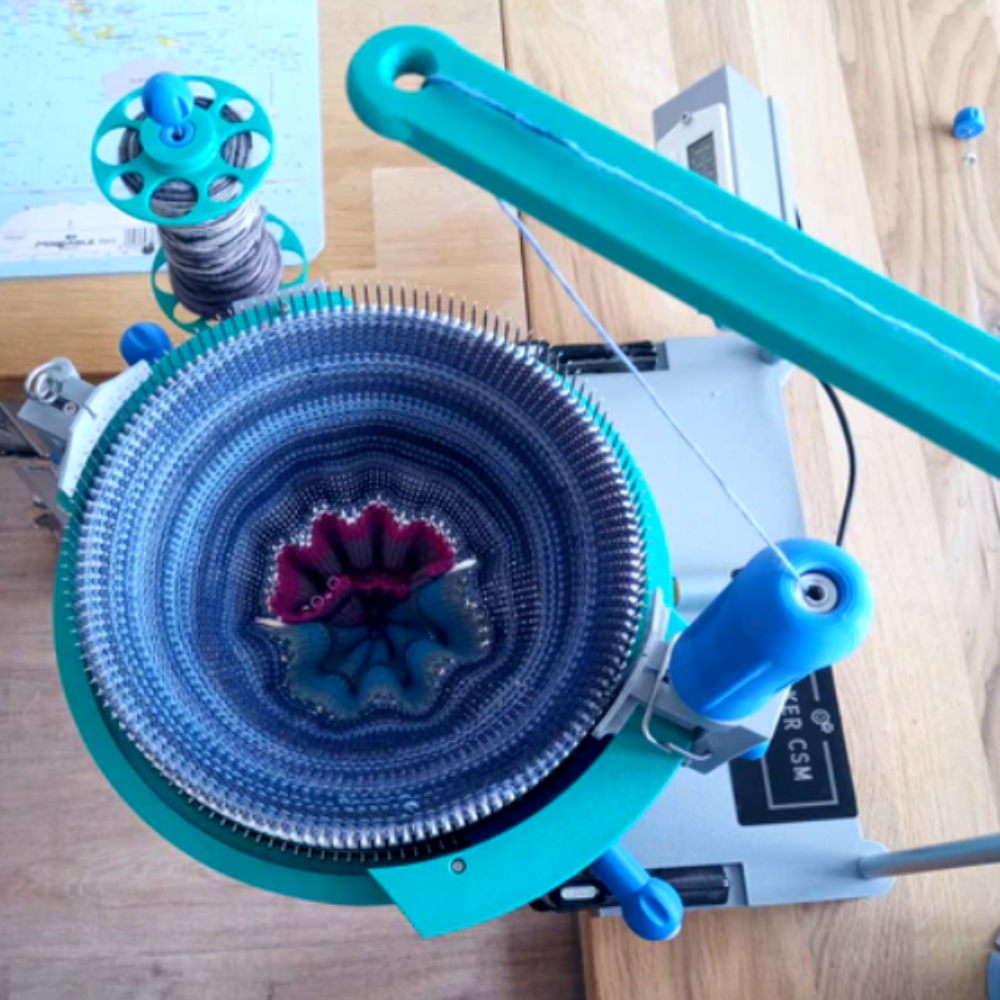
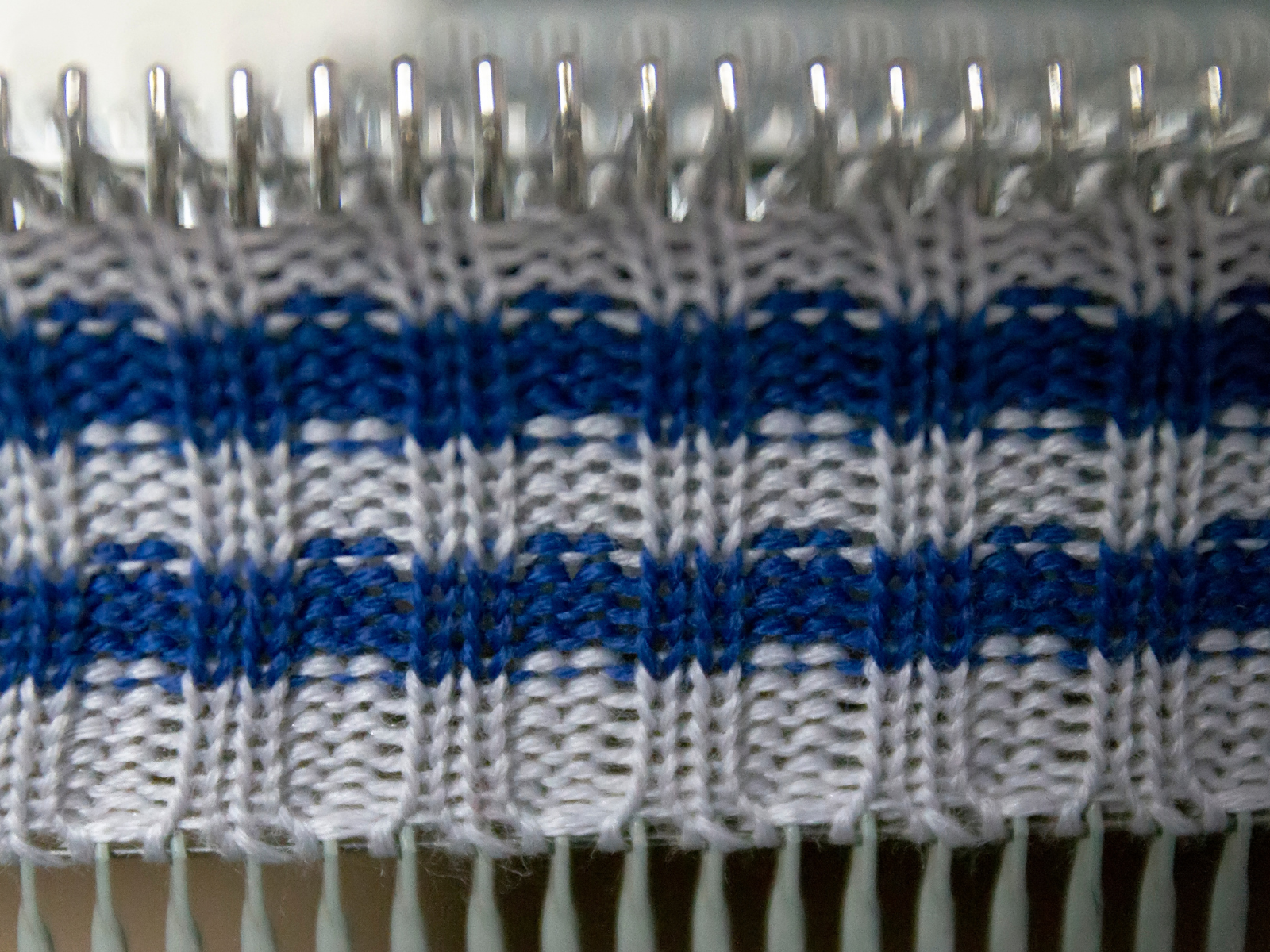
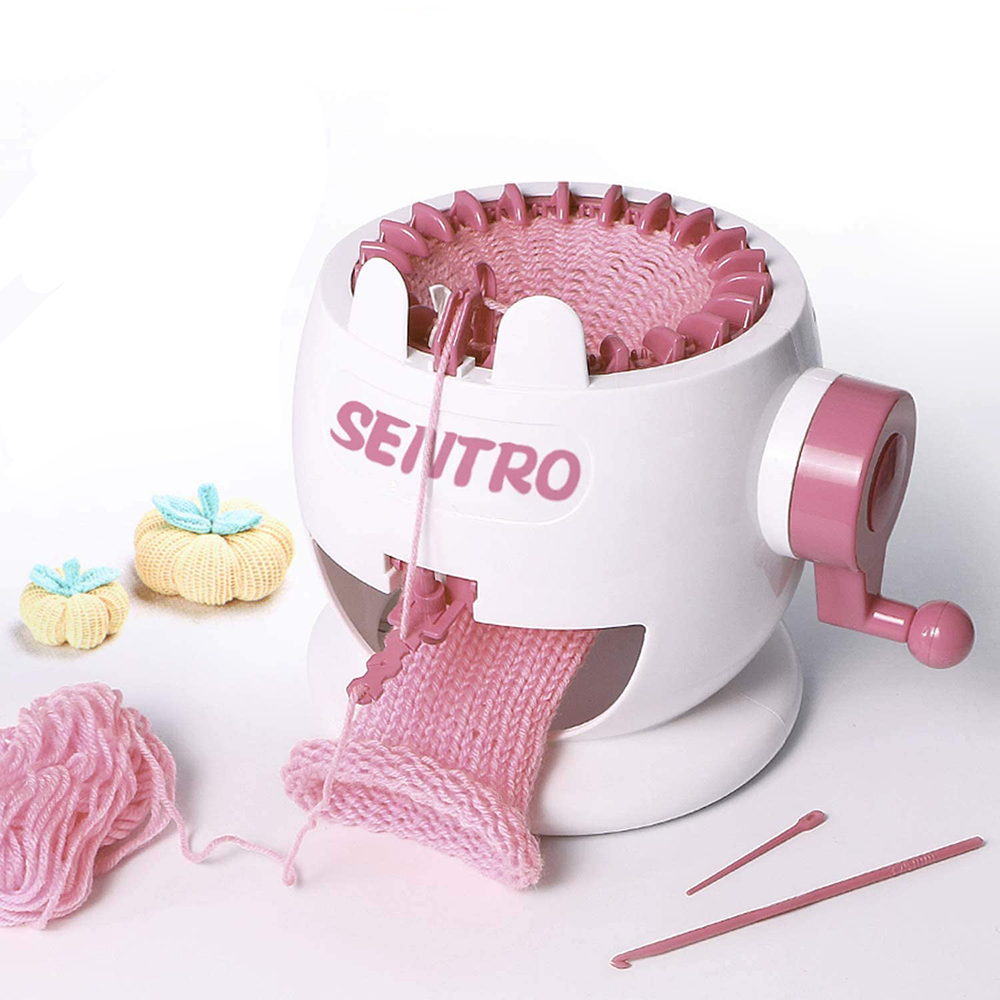
Shaping the Sweater
Shaping is an integral part of sweater-making, whether you're using hand knitting or a using a knitting machine.
This includes increasing or decreasing stitches to create the armholes, necklines, and waist shaping.
Machine knitting offers tools like the hold position and short row knitting to make these processes more manageable.
Following a pattern and using stitch markers can help keep track of the shaping elements.
Sleeves can be knitted in the round or as flat panels, depending on your machine's capabilities.
Ribbing rows for cuffs and the hem can be created using a ribber attachment or by manually transferring stitches to create purl rows.
This gives the sweater a professional finish and helps maintain its shape.
Once all the pieces are knitted, they need to be assembled to form the final sweater.
This is typically done using a technique similar to sewing, where the sides and sleeves are seamed together.
The wrong side of the knitted fabric is usually on the inside, so the seam is not visible on the finished garment.
Once your sweater is complete, you'll need to remove it from the machine and sew it together at the seams.
This part is important as it will ensure that your sweater fits properly and looks its best.
The finishing phase includes weaving in ends, blocking the sweater to the correct dimensions, and adding any additional details like buttons or closures.
This is where your project truly comes together, and the quality of your finishing work can make a significant difference in the appearance of the sweater.
And of course, don't forget to add any embellishments such as buttons or pockets to really make your sweater stand out.
Once everything is complete, you can proudly wear your handmade sweater with pride and warmth!


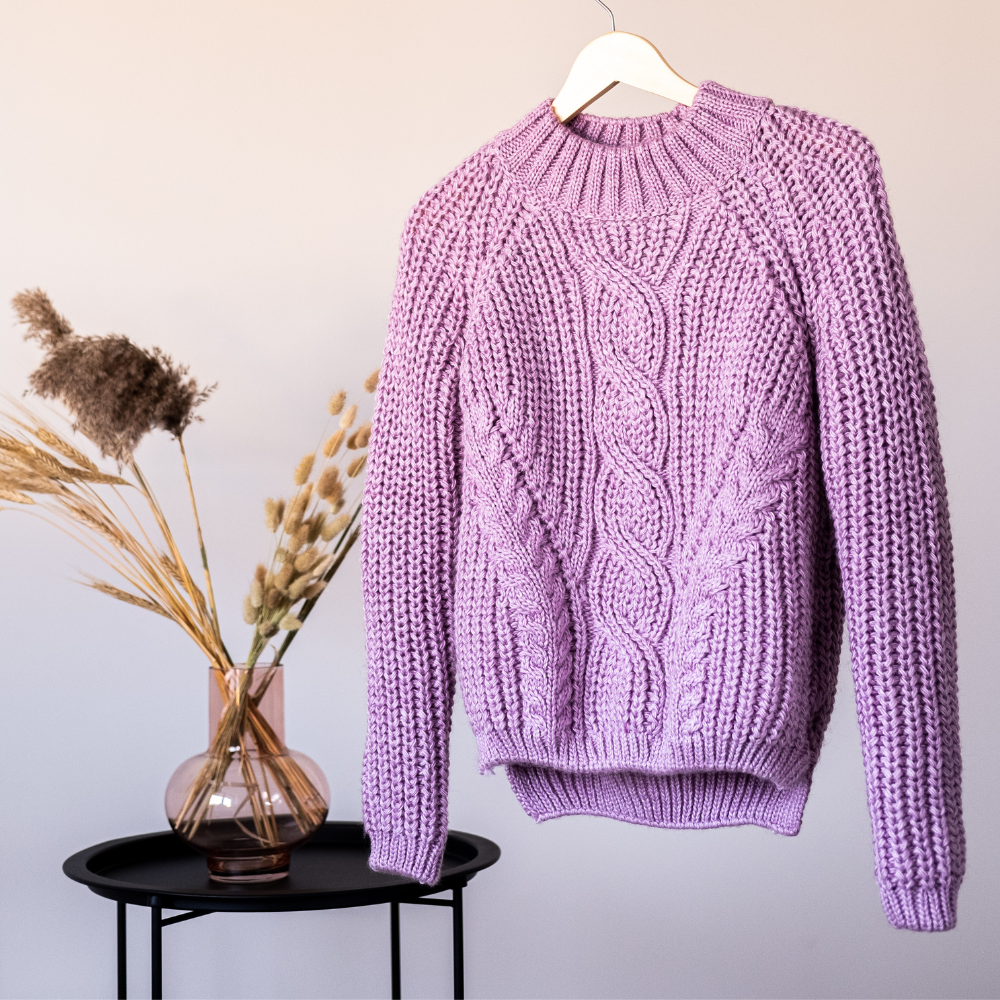
Advanced Techniques for Machine Knitting
Machine knitting offers a plethora of advanced techniques that can elevate your sweater-making skills to a professional level.
For those who have mastered the basics, exploring intricate patterns and textures can be a rewarding challenge.
By utilizing various attachments and settings on your knitting machine, you can create complex cable knits, lace patterns, and even intarsia designs.
These advanced methods may require a deeper understanding of how to manipulate all the stitches on your machine, but the results are stunning, bespoke garments that showcase your knitting prowess.
In addition to pattern complexity, another advanced technique involves shaping the body panels and sleeves with precision.
This often entails increasing or decreasing stitches in one row to create the desired silhouette.
For those who have mastered the basics of machine knitting, delving into advanced techniques can open up a world of possibilities.
A hand knitter's guide may offer insights into intricate patterns and textures that can be adapted to machine knitting with some creativity.
For instance, incorporating hand-manipulated stitches or using a garter bar can add a unique touch to your sweater.
These methods allow for more complex designs, which can be especially rewarding for those who were just curious about the capabilities of their knitting machine and now seek to push its boundaries.
Moreover, video tutorials can be an excellent resource for visual learners who are just curious about how to achieve these effects.
As you watch and learn, take notes and experiment with sample swatches to perfect your technique before applying it to your sweater project.
Expanding your skill set to include advanced techniques often involves experimenting with different yarn types and tension settings.
This can lead to discovering new ways to work ribbing, cables, and lace patterns that were traditionally in the realm of hand knitting.
A few days prior, you might have thought such complexity was beyond the scope of your machine, but with patience and practice, these advanced projects become achievable.
Remember, the key to mastering these skills is persistence and a willingness to learn from each stitch and sleeve you create.
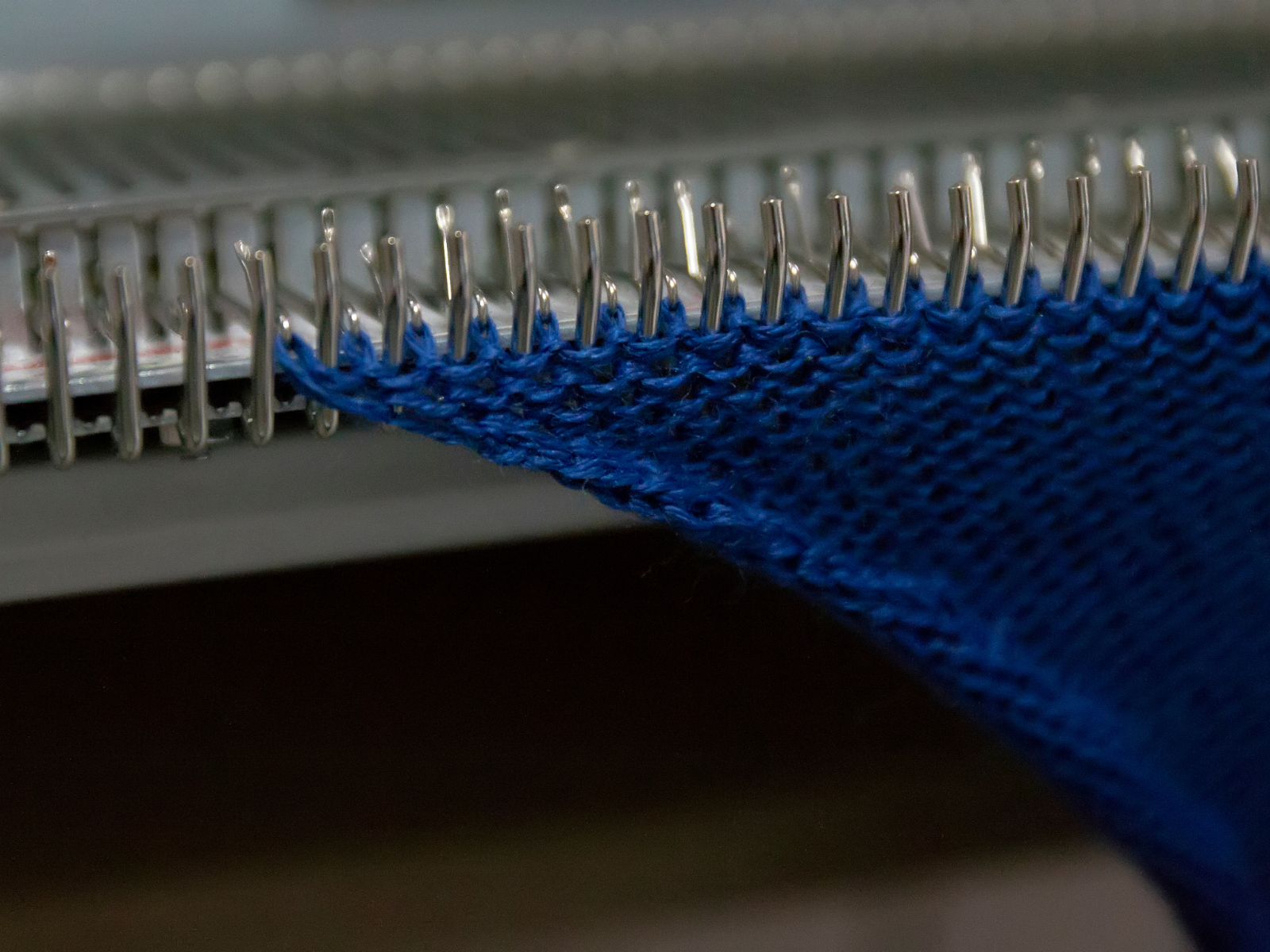
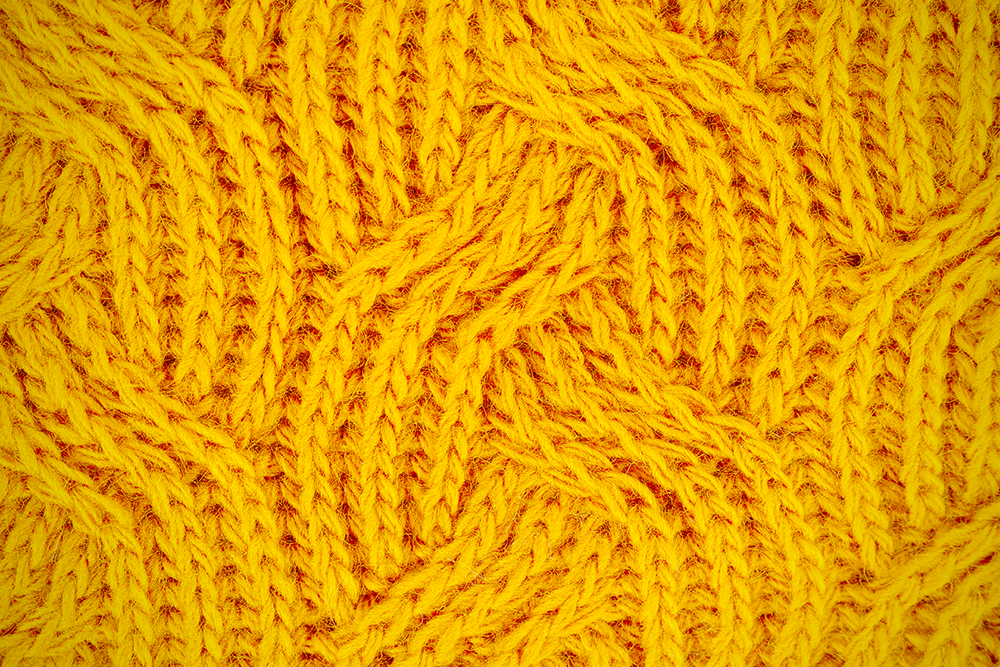
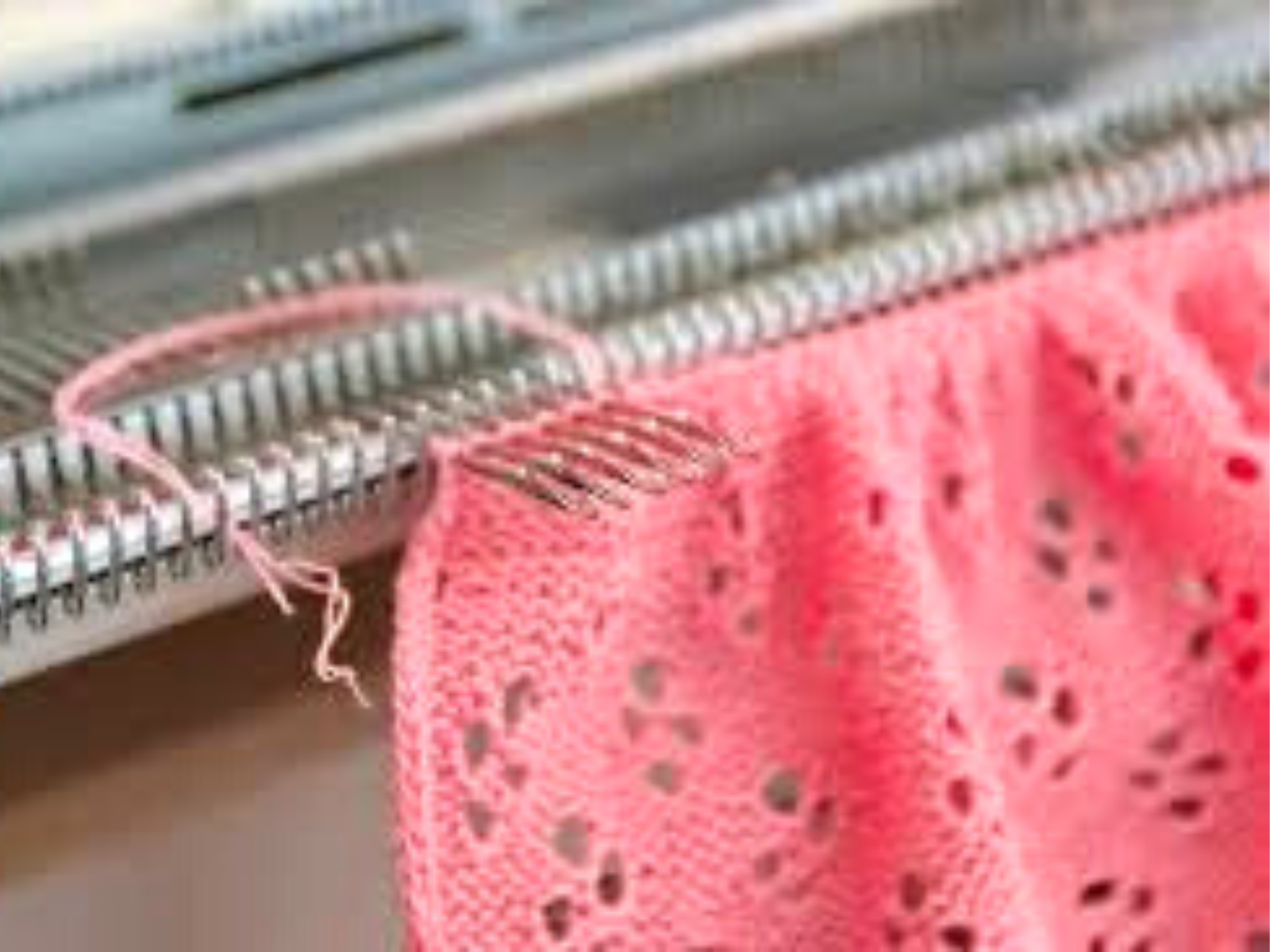
Integrating Knitting with Sewing Machines
For those looking to push the boundaries of textile creation, integrating the use of sewing machines with machine knit projects opens up a new realm of possibilities.
Sewing machines can be used to add structural elements to your knitted pieces, such as zippers, buttons, or even fabric linings.
This hybrid approach can give your sweaters a polished, durable finish that is difficult to achieve with knitting needles alone.
It's a great post-knitting step that can add a professional touch to your handmade garments, and it's an idea worth exploring for anyone interested in fashion design.
When it comes to assembling the sweater, sewing machines can also play a crucial role.
After you've machine knit the two panels and sleeves, a sewing machine can help you join these pieces with precision and strength.
This method is particularly useful for working on ribbing and other areas where a seamless join is desired.
For those who are new to this technique, search for a video tutorial that can guide you through the process.
With practice, you'll find that combining the capabilities of both machines can significantly enhance the quality and durability of your knitted creations.
The Art of Customization in Machine Knitting
Customization is a significant advantage of machine knitting, allowing knitters to tailor their creations to personal preferences or specific needs.
When designing a sweater, you can modify the stitch size, sleeve length, and overall fit with precision.
This level of customization is particularly beneficial for those creating garments for unique body types or for knitters who wish to replicate a beloved but worn-out sweater.
By adjusting the machine's settings and carefully planning your pattern, you can achieve a custom-fit garment that rivals any hand-knitted piece.
Moreover, customization extends beyond sizing and fit; it also encompasses the artistic expression of the knitter.
With a knitting machine, you can easily experiment with color changes, intarsia, and jacquard patterns to make each sweater a one-of-a-kind masterpiece.
Whether you're a seasoned hand knitter or someone who discovered the joys of machine knitting just days ago, the ability to personalize every aspect of your work ribbing to the last stitch of the sleeve, is what makes machine knitting an endlessly versatile craft.

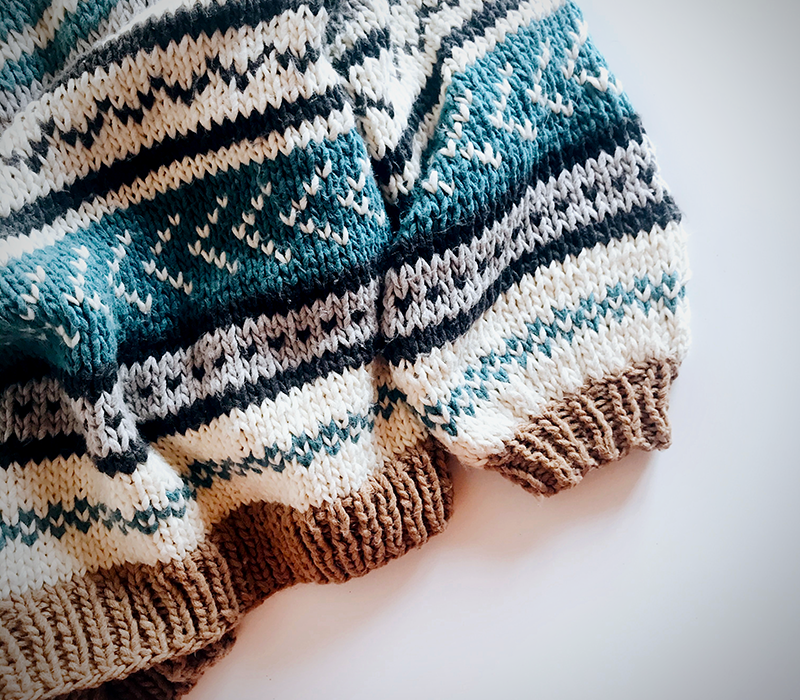
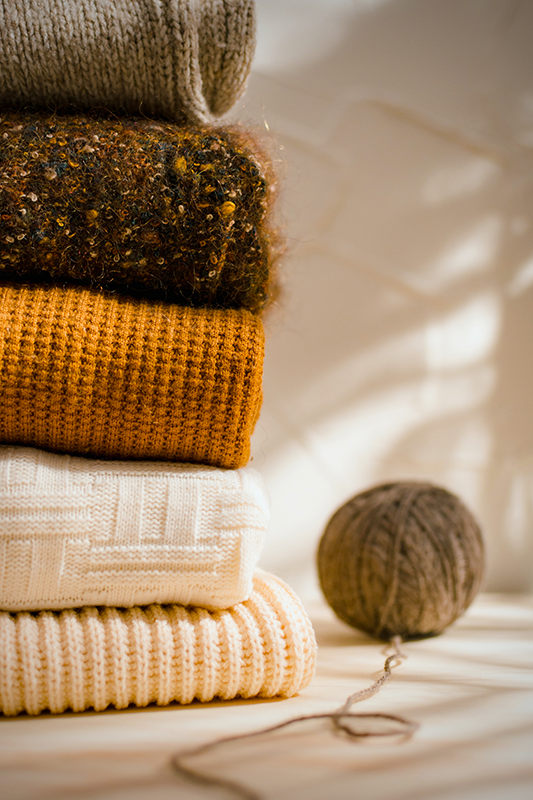
Troubleshooting Common Issues
Even experienced machine knitters can encounter issues such as dropped stitches, tension problems, or difficulties with complex patterns.
Having a reference guide or watching helpful YouTube videos can provide solutions and keep your project on track.
It's also essential to maintain your machine by regularly cleaning and oiling it, as well as replacing needles and other parts as needed.
By doing so, you'll minimize the chances of encountering technical issues and ensure that your machine stays in good working condition.
You'll need to be patient and diligent in order to ensure that your sweater turns out just right.
But with practice and persistence, you'll be able to create a beautiful sweater in no time.
Don't be afraid to experiment and try new techniques, as this is how you'll truly learn the capabilities of your knitting machine.
And most importantly, remember to have fun and enjoy the process of creating something unique and beautiful with your own two hands (and a little help from a knitting machine).
Exploring More Options
Once you've mastered the basics of machine knitting a sweater, you can explore more options like knitting for larger sizes, incorporating different types of yarn, or trying out advanced techniques.
The possibilities are vast, and each project offers a chance to learn and improve.
Don't be afraid to step out of your comfort zone and tackle new challenges, as this is how you'll become a skilled and versatile machine knitter.
And who knows, maybe one day you'll even design your own line of sweaters using the knowledge and techniques gained from your knitting machine journey!
The possibilities are endless, and with each stitch, you're one step closer to becoming a master machine knitter.
So keep exploring, experimenting, and creating beautiful sweaters that you can proudly say were made with a knitting machine!
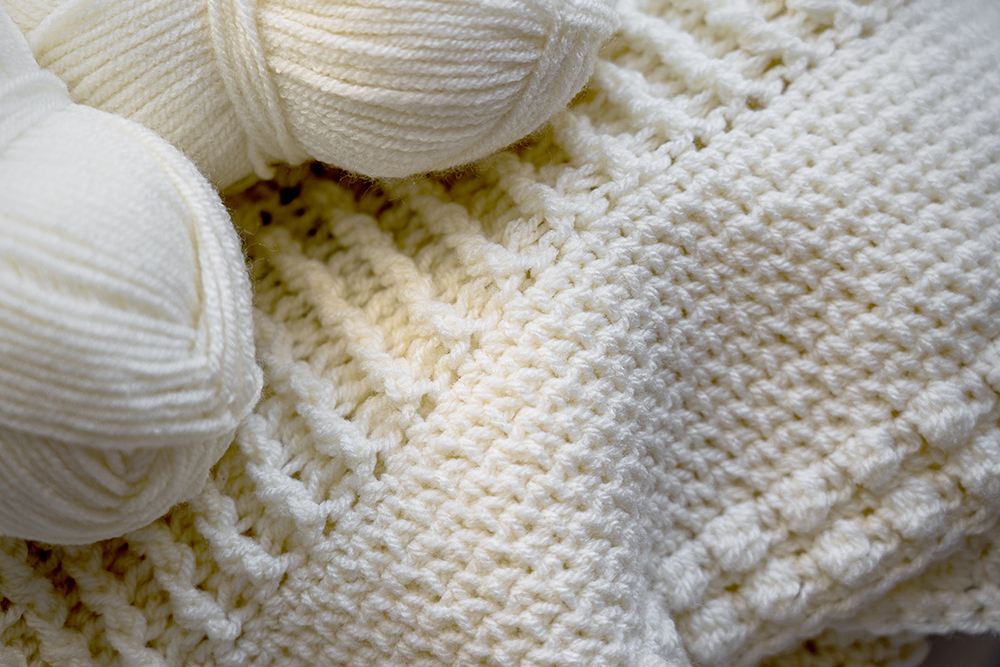
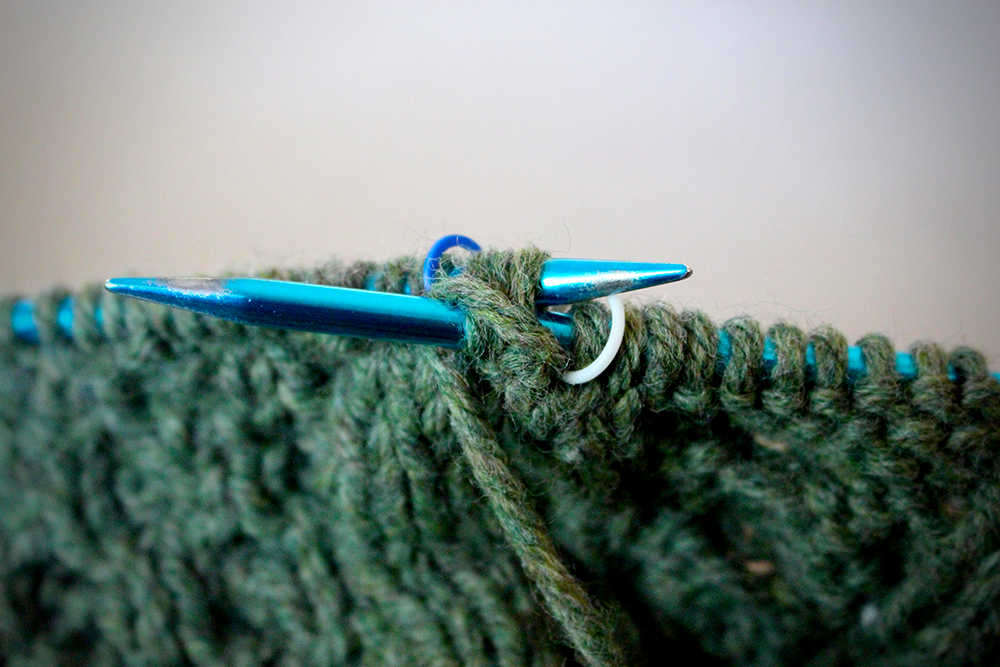
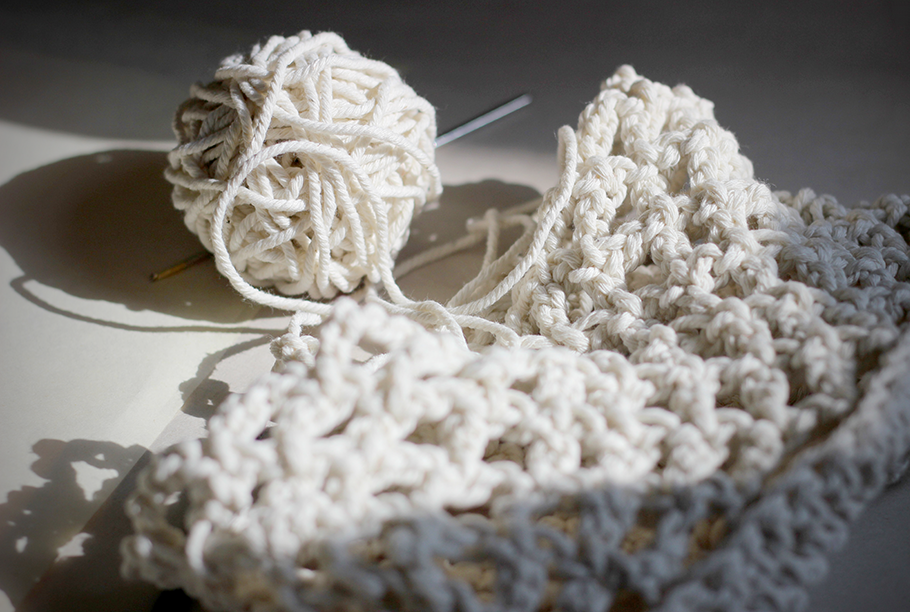
Resources for Machine Knitters
There are numerous resources available for machine knitters, from online forums and communities to video tutorials and books.
These can be invaluable when learning new techniques or troubleshooting problems with your machine or project.
Some popular resources for machine knitters include Knitting Paradise, Ravelry's Machine Knitting group, and Knit It Now.
You can also find a wealth of informative videos on YouTube channels like Silver Reed, Kathleen Kinder, and Nina E.
In addition to online resources, there are also books available that delve into more advanced machine knitting techniques or provide patterns for various projects.
Some popular titles include "The Machine Knitter's Handbook" by Jo Newton, "Machine Knitting: The Technique of Slipstitch" by Kathleen Kinder, and "The Ultimate Sweater Book for Machine Knitters" by Carla Scott.
Attending machine knitting workshops or classes can also be a great way to learn from experienced knitters and get hands-on practice with different machines and techniques.
Look for local classes or events in your area, or consider attending a knitting retreat where you can connect with others who share your passion for machine knitting.
By utilizing these resources and continually challenging yourself to improve, you'll become a skilled machine knitter who can create beautiful, unique sweaters with confidence and ease.
Stitching Success: Knitting Tips and Tricks
Machine knitting offers a wide range of capabilities and techniques, making it an incredibly versatile craft.
There are lots of factors to consider when creating a successful sweater, from choosing the right yarn and tension settings to mastering various stitches and techniques.
Remember, the time it takes to knit a sweater on a knitting machine varies depending on the complexity of the design and the knitter's experience; generally, it can take anywhere from a few hours to several days.
Also, not all knitting machines can handle every type of yarn, so it's important to check the specifications of your machine and choose yarn that is compatible with its capabilities.
And the cost-effectiveness of knitting a sweater with a machine depends on several factors, including the cost of the machine, yarn, and your time.
However, machine knitting allows for customization and the satisfaction of creating a garment with your own hands, which can be priceless.
As with any craft, there are always tips and tricks that can make the process smoother and more efficient.
Here are a few helpful knitting tips for machine knitters:
- Always start with a clean and well-maintained knitting machine to avoid technical issues.
- Use scrap yarn to test tension before starting on your actual project.
- Keep notes on your projects, including tension settings and any modifications you made, for future reference.
- Don't be afraid to experiment with different yarn weights and types to achieve unique textures and effects.
- Utilize stitch holders or extra needles to hold stitches in place while shaping or adding details.
- When transferring stitches, use a fine crochet hook or transfer tool for more precision.
- Use quality machine knitting needles to avoid dropped stitches or other issues.
- Avoid overstretching your knitted fabric, as this can affect the overall fit and shape of your garment.
- Take breaks and stretch your hands and wrists while knitting to prevent fatigue and injury.
With these tips in mind, you'll be well on your way to becoming a successful machine knitter.
Keep practicing, keep learning, and don't be afraid to ask for help or advice when needed.
Machine knitting may have a learning curve, but with patience and dedication, you'll achieve beautiful results that showcase your skills and creativity!
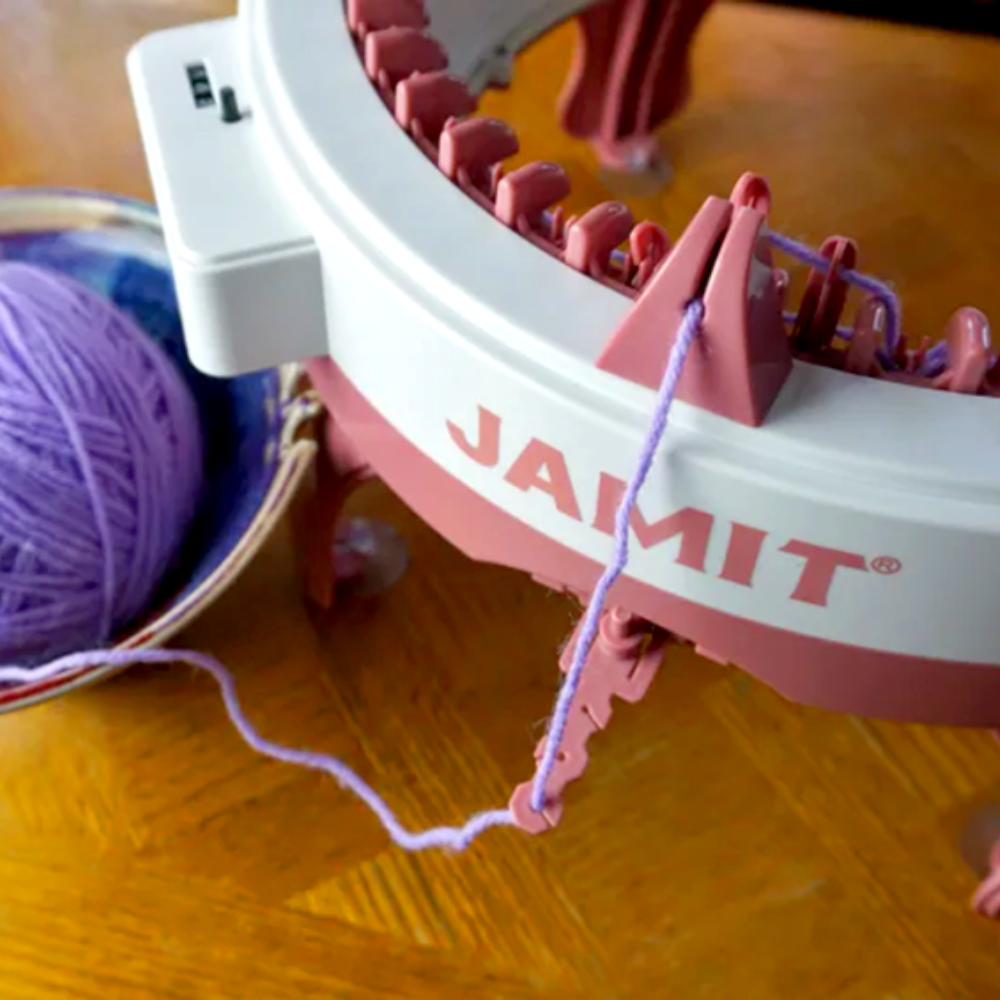
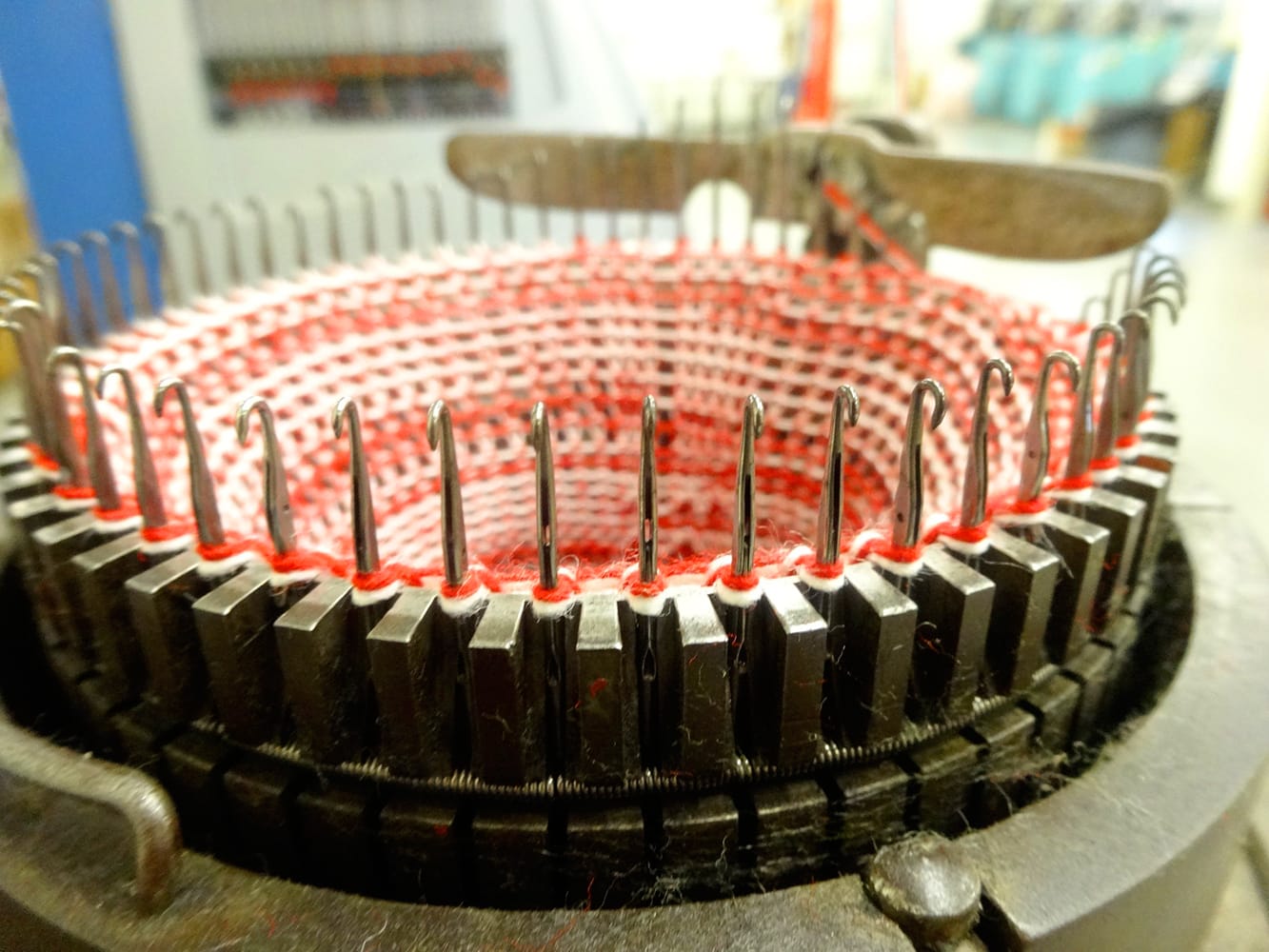
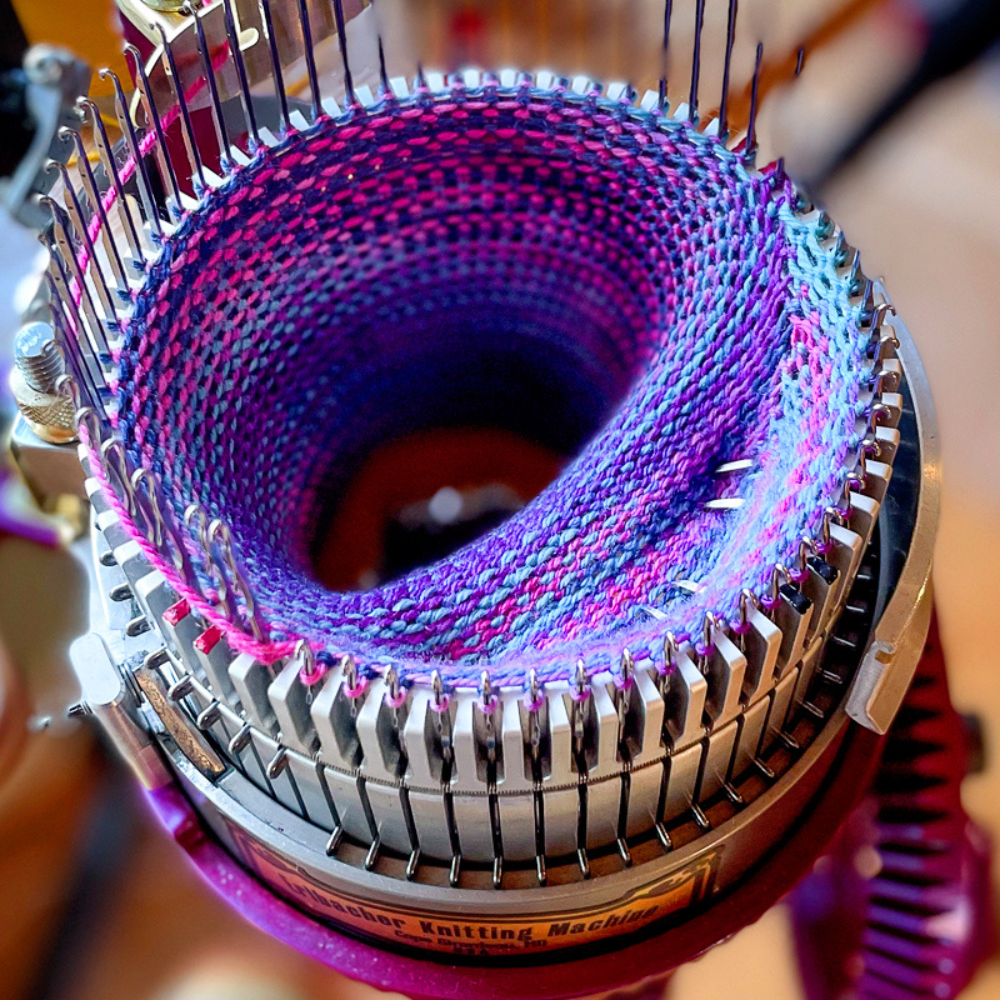
Stay Cozy This Winter with Knitted Sweaters
Knitting a sweater with a knitting machine is not only possible but can be a fun and rewarding experience.
It may seem daunting at first, but the journey of creating a machine-knitted sweater is one filled with creativity and satisfaction.
While there may be a bit of a learning curve, the results are well worth it - imagine having a custom-made sweater in just a fraction of the time!
With the ideal machine, materials, and knowledge, you can create beautiful, professional-looking sweaters in a fraction of the time it would take to hand knit them.
Remember to plan your project carefully, pay attention to detail, and don't be afraid to seek out resources and help when needed.
Whether you're looking to expand your knitting skills, customize your wardrobe, or create unique and personalized gifts for loved ones, machine knitting is a versatile craft that offers endless possibilities.
So, what are you waiting for?
It's time to get knitting; grab your yarn and get ready to knit the perfect sweater that will keep you cozy and stylish all winter long!
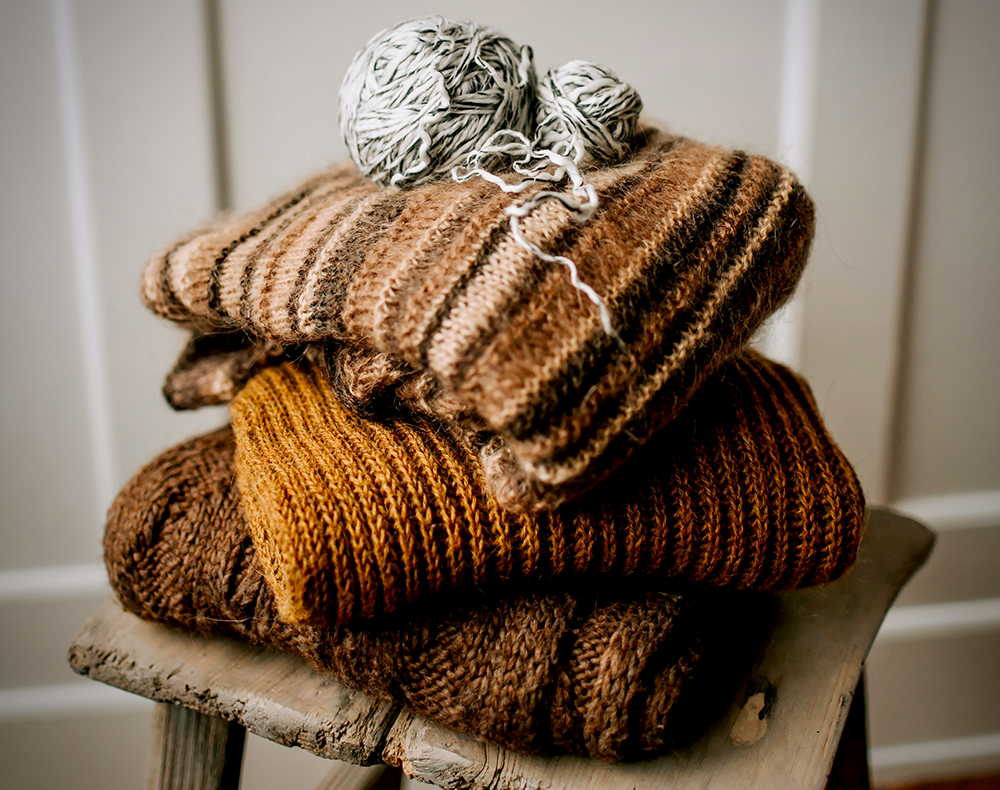
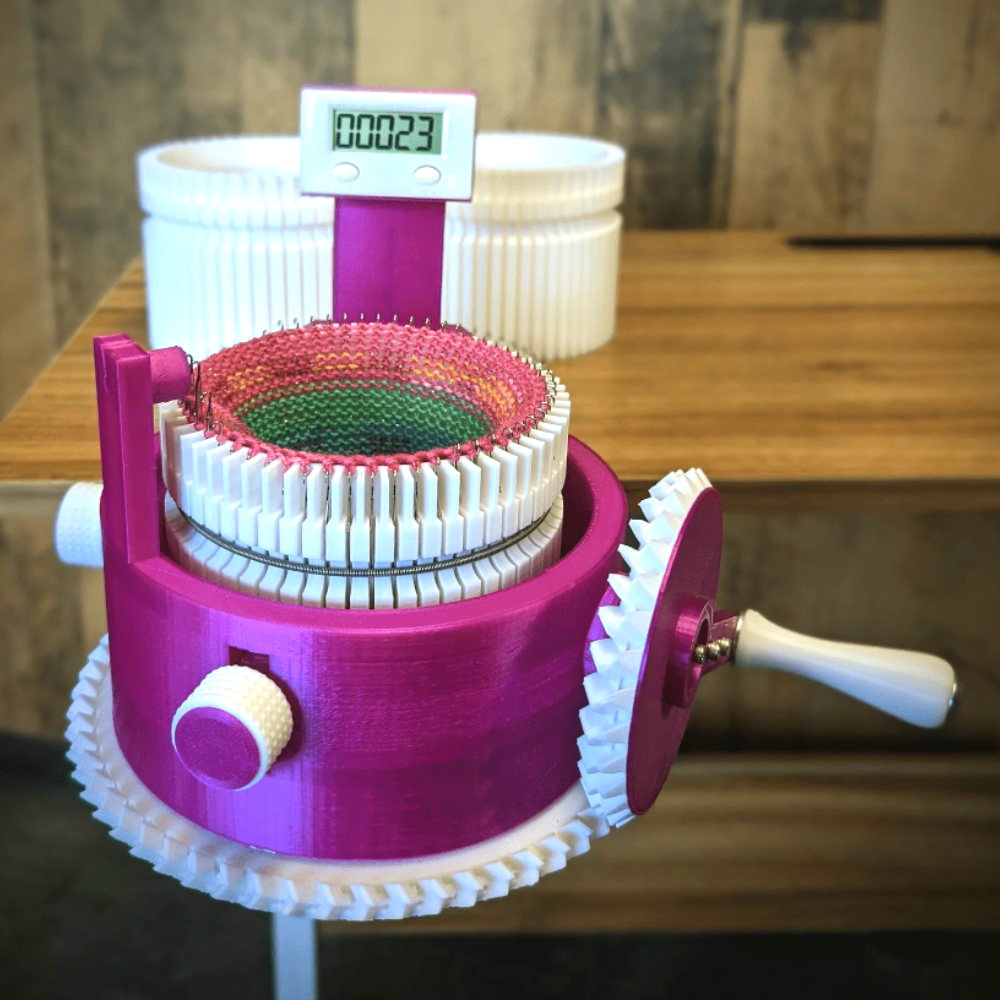

Ready to start knitting your next sweater? Check out Anna Greene's video!
Want even more content about creativity and art?
Be sure to check out all of our creative chronicles!
Interested in knitting?
Check out some of our other articles:
-Interchangeable knitting needles
-Can you knit socks on a knitting machine?
-Difference between knitting and crochet
-Can you crochet with a knitting machine?
